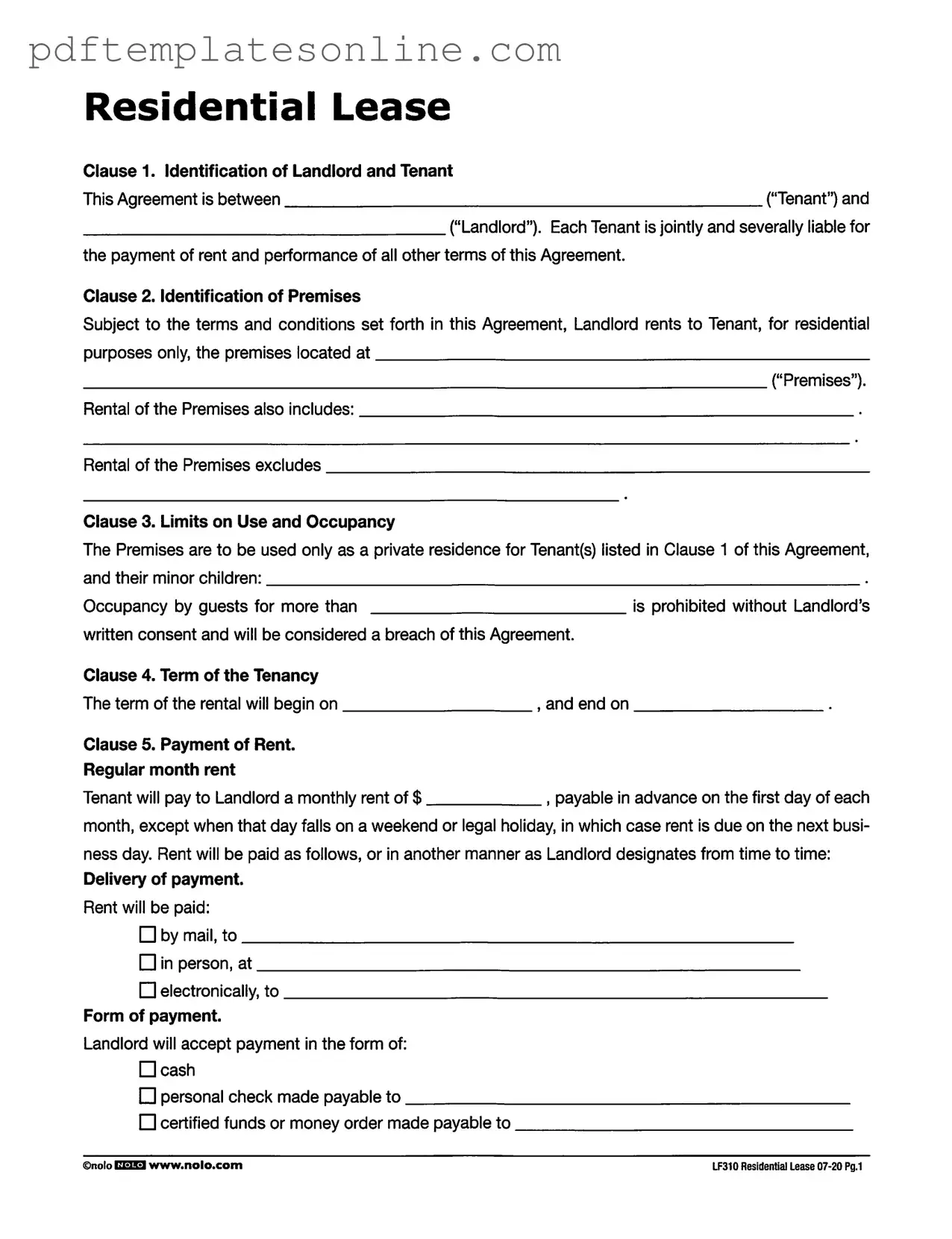Filling out the Lf310 Residential Lease form is a crucial step in establishing a clear agreement between landlords and tenants. However, several common mistakes can lead to misunderstandings or legal issues. Awareness of these pitfalls can help ensure that the lease is completed accurately.
One frequent error is leaving the Identification of Landlord and Tenant section incomplete. This section requires the full names of both parties. Omitting this information can create ambiguity regarding who is responsible for fulfilling the terms of the lease. Each tenant is jointly and severally liable, meaning that all tenants are responsible for rent and obligations. Failure to identify all parties can complicate enforcement of the lease.
Another mistake involves the Identification of Premises clause. Tenants often forget to specify the complete address of the rental property. Without this critical information, it may be unclear which property is being rented, leading to disputes. Additionally, leaving out details about what is included or excluded in the rental agreement can create confusion regarding the rights and responsibilities of both parties.
In the Limits on Use and Occupancy section, tenants sometimes neglect to clarify who will occupy the premises. This clause is essential for defining occupancy limits and ensuring compliance with local regulations. If guests stay longer than allowed without written consent, it may be considered a breach of the lease. Properly identifying all occupants can prevent future conflicts.
The Payment of Rent clause also presents opportunities for error. Tenants may forget to specify the exact amount of rent or the due date. This oversight can lead to late payments and potential penalties. Moreover, not detailing the acceptable methods of payment can create confusion. Clearly stating how and when rent should be paid is essential for maintaining a good landlord-tenant relationship.
Additionally, many tenants overlook the importance of the Security Deposits clause. It is critical to specify the amount of the deposit and the conditions for its return. Tenants may mistakenly believe they can use the deposit for last month’s rent, which is typically not allowed without written consent from the landlord. Understanding these terms can help avoid disputes when the lease ends.
Another common mistake involves the Utilities section. Tenants sometimes fail to clarify which utilities they are responsible for and which will be covered by the landlord. This lack of clarity can lead to unexpected expenses and frustrations. Clearly outlining these responsibilities is vital for budgeting and ensuring a smooth living experience.
Finally, tenants often disregard the Prohibition of Assignment and Subletting clause. Many assume they can sublet the property without the landlord's consent. This misunderstanding can lead to serious consequences, including eviction. It is crucial to understand the restrictions on subletting to ensure compliance with the lease terms.
By being aware of these common mistakes, both landlords and tenants can work towards a more effective and harmonious leasing experience. Properly completing the Lf310 Residential Lease form is essential for protecting the rights and responsibilities of all parties involved.
